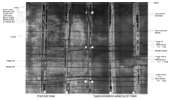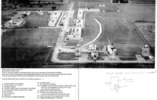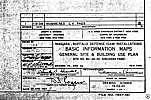In 1948, 16 year old Earl Close enlisted in the National Guard to be in a 90 mm AAA unit.
In 1968, Major Close retired after extensive experience in the Nike program.
Earl sent me the following cover letter (1 page story of himself) and many interesting documents - displayed here :-))
- Cover Letter
- Fallout shelter for BU-18
- Nuclear Employment Orders
- Nuclear Detonations
- Plots and records of firing a Nike Ajax at Annual Service Practice
- Test & annotated pictures of BU-18 Lancaster, New York
- Annotated pictures of BU-34 Orchard Park , New York
- Some Engineering Drawings of BU-34 Orchard Park , New York
- Battery News Sheets
Dear Ed;
Later on a Target Ranging Radar and tower were added, along with another experimental
model of long range search radar. In 1966 an
above-ground fallout shelter was built
in the IFC area. It was all poured concrete 12+
inches thick with an "air-lock" decontamination/entry way. Had double bunk beds and
would house about 100
men. The BC and RC vans were moved inside with access to the FUIF room. The launcher area crews were
equipped to take cover within the casemates in case of nuclear fallout.
Fallout Shelter
At the time, all of what appears above was Top Secret! I wrote the above today.
the 6th of February. 1997 and this is the first time since 1968 when I retired.
that I have discussed this sensitive information either verbally or on paper
THE INTEGRATED FIRE CONTROL (IFC) AREA consisted of: -----
THE LAUNCHER AREA consisted of: -----
Battery News Sheets
Of course, a News Sheet could be typed and hung in the Orderly Room or barracks.
Earl Close in Lancaster, N.Y. was co-located with battalion HQ and likely
had access to reproducing equipment.
Cover Letter
415 East Glenhurst Drive
Tucson, AZ 85704
(520) 742-3467
eclose1010@aol.com
821 Neon Terrace
Fremont, CA 94536
[signed]
Earl Close
NUCLEAR EMPLOYMENT ORDERS
NUCLEAR DETONATIONS
To give you an idea of the destructive force of these warheads: the weapon detonated
over Hiroshima was a 13 KT weapon, the one detonated at Nagasaki was a 22 KT implosion
weapon - both were low air bursts (the initial "fire-ball" did not contact the ground).
Plots and records
of firing a Nike Ajax
Annual Service Practice
.

"Nike Missile Firing Report" - page 1
126 KBytes

"Nike Missile Firing Report" - page 2
63 KBytes

The Horizontal Plotting Board Trace for the kill by "Short Round"
163 KBytes

The Vertical Plotting Board Trace for the kill by "Short Round"
109 KBytes

The Chart Recording for the kill by "Short Round"
116 KBytes,
Higher Resolution
239 K BYTES
NIKE HERCULES SITE - BU-18
LANCASTER, NEW YORK
When the site was closed, a man purchased the area, remade the Barracks into his home
and opened one of the casemates as an underground machine and repair shop for antique cars.
All other buildings were destroyed when the site was closed.
I commanded the Lancaster site from April 1963 until May 1964. Henry Earl Close Pvt 1948 - Maj 1968
First sheet of 27 Sep 63
120 KBytes
Second sheet of 27 Sep 63
120 KBytes
First sheet of 7 March 1964
120 KBytes
Second sheet of 7 March 1964
120 KBytes
First (only?) sheet of 17 April 1964
120 KBytes









